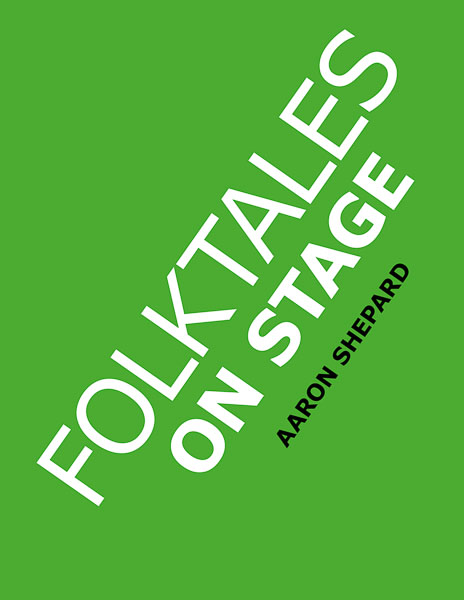Getting Started
About This Book
About the Scripts
About Staging
About the Web Site
The Adventures of Mouse Deer: Favorite Folk Tales of Southeast Asia
Mouse Deer is small, and many animals want to eat him—but first they have to catch him!
GENRE: Folktales, trickster tales
CULTURE: Indonesian, Malaysian
THEME: Wits vs. power
READERS: 9 or more
READER AGES: 7–10
LENGTH: 20 minutes (3 + 7 + 4 + 6 + 1)
The Calabash Kids: A Tale of Tanzania
The prayers of a lonely woman are answered when her gourds change into children.
GENRE: Folktales
CULTURE: African, Tanzanian
THEME: Name-calling
READERS: 16 or more
READER AGES: 7–11
LENGTH: 8 minutes
The Hidden One: A Native American Legend
The invisible hunter at the end of the village is sought as husband by every village maiden—but will Little Scarface even dare to try?
GENRE: Folktales, Cinderella tales
CULTURE: Native American, Canadian
THEME: Self-esteem, heroines
READERS: 13
READER AGES: 7 and up
LENGTH: 8 minutes
The Boy Who Wanted the Willies
Hans has never in his life been frightened—but a night in a haunted castle should finally give him his chance.
GENRE: Folktales, tall tales, ghost stories
CULTURE: German, European
THEME: Fearlessness
READERS: 19 or more
READER AGES: 8–12
LENGTH: 10 minutes
The Princess Mouse: A Tale of Finland
When a young man seeks a wife by way of family tradition, he finds himself engaged to a mouse.
GENRE: Folktales
CULTURE: Finnish
THEME: Kindness, humility, integrity
READERS: 8 or more
READER AGES: 8–12
LENGTH: 12 minutes
The Legend of Slappy Hooper: An American Tall Tale
Slappy is the world’s biggest, fastest, bestest sign painter, but he’s too good—his pictures keep coming to life.
GENRE: Tall tales, folktales
CULTURE: American
THEME: Pursuit of excellence
READERS: 8 or more
READER AGES: 8–13
LENGTH: 10 minutes
The Gifts of the Grasscutter: A Tale of India and Pakistan
Wali Dad, a humble grasscutter, never asked for wealth—so why can’t he give it away?
GENRE: Folktales
CULTURE: Asian Indian, Pakistani
THEME: Generosity
READERS: 15
READER AGES: 8–13
LENGTH: 10 minutes
The Baker’s Dozen: A Saint Nicholas Tale
Van Amsterdam, the baker, is as honest as he can be—but he may have something left to learn.
GENRE: Legends, St. Nicholas tales
CULTURE: American (Dutch colonial)
THEME: Generosity
READERS: 6 or more
READER AGES: 8–13
LENGTH: 6 minutes
Master Maid: A Tale of Norway
When Leif goes to work for the troll, only the advice of a remarkable young woman can save him from his foolishness—if only he’ll listen!
GENRE: Folktales, tall tales
CULTURE: Norwegian
THEME: Stubbornness, heroines
READERS: 9 or more
READER AGES: 8–15
LENGTH: 12 minutes
The Magic Brocade: A Tale of China
To save his mother’s life, a young man must retrieve her weaving from the fairies of Sun Palace.
GENRE: Folktales
CULTURE: Chinese
THEME: Following dreams; creative process
READERS: 9 or more
READER AGES: 8–15
LENGTH: 12 minutes
Forty Fortunes: A Tale of Iran
When a young man’s wife makes him pose as a fortuneteller, his success is unpredictable.
GENRE: Folktales
CULTURE: Iranian (Persian), Middle Eastern
THEME: Pretension
READERS: 11 or more
READER AGES: 8 and up
LENGTH: 10 minutes
Master Man: A Tall Tale of Nigeria
Shadusa thinks he’s the strongest man in the world—till he meets the real Master Man.
GENRE: Tall tales, folktales
CULTURE: West African, Nigerian
THEME: Machismo
READERS: 12 or more
READER AGES: 8 and up
LENGTH: 10 minutes
The Princess and the God: A Tale of Ancient India
The princess Savitri must use all her wit and will to save her husband from the god of death.
GENRE: Myths, folktales, legends
CULTURE: Asian Indian (ancient), Hindu
THEME: Heroines, determination
READERS: 11
READER AGES: 9–15
LENGTH: 10 minutes
The Enchanted Storks: A Tale of Bagdad
The Calif and his Vizier try a spell that changes them into storks, then find they can’t change back.
GENRE: Fairy tales, folktales
CULTURE: Iraqi, Middle Eastern
THEME: Recklessness
READERS: 13 or more
READER AGES: 10–15
LENGTH: 14 minutes
The Crystal Heart: A Vietnamese Legend
The mandarin’s daughter did not really see the boatman who sang from the river, but she’s sure he’s her destined love.
GENRE: Folktales
CULTURE: Vietnamese
THEME: Kindness, false imagining
READERS: 13
READER AGES: 10 and up
LENGTH: 10 minutes
The Sea King’s Daughter: A Russian Legend
A poor musician is invited to play in the Sea King’s palace, where he’s offered more than riches.
GENRE: Legends, folktales, epic ballads
CULTURE: Russian (medieval)
THEME: Making choices; value of arts
READERS: 9 or more
READER AGES: 10 and up
LENGTH: 10 minutes
